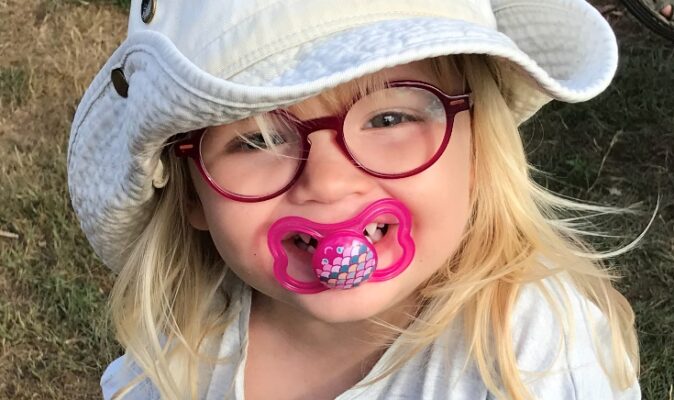CHOOSING GLASSES FOR CHILDREN
Guide: The ideal pair of children’s glasses
Cool factor

The frame
Size and fit:
It is important to find a frame that suits the child’s age and size. The optician will be able to access this, when the glasses are being tried on by the child. The shape of the face also plays a role. Consult with your optician when trying out glasses.
If your child needs a pair of bifocals (lenses with reading segments), the size of the lens must be large enough to make it possible.
Overall, the glasses should fit well, so they don’t move up and down the nose, and remain in place even when the child is being active or standing upside down.
The material:
Glasses frames are available in different materials. Plastic frames are often robust and sturdy. Metal frames made of titanium etc. are often lighter and more flexible/durable, although also a little expensive. However, this flexibility can result in them being bent more easily.
Some glasses frames are able to be bent into place. For example, the glasses from Lindberg are especially popular for children, as there is a series made using a very flexible material.
Nose pad:
There are nose pads that are fixed and integrated into the actual frame of the glasses, as well as nose pads that are adjustable. The latter have the advantage of being able to fit to your baby’s nose. A disadvantage is that if they are on a pair of glasses that a child is wearing, who then falls over and hits their head, the glasses hit their face, and the nose pads may risk leaving wounds. The risk is admittedly small, but it does happen.
Legs of the glasses
The glasses legs have to be in line with the face without squeezing. It is possible to find glasses legs with springy hinges that allow the glasses to be more flexible. Given children’s sometimes rather careless handling of glasses, flexibility can potentially limit the risk of damage to the glasses.
Glasses with leg tips that hook around the back of the ear are also a good option for some children, as they don’t slide off as easily. They are flexible and can be adjusted to the child. Some opticians are able to add the tips onto the glasses frame, even if they are not there to begin with.
Types of lenses
There is a selection of different options in terms of customising your lenses.
Often, polycarbonate lenses are used in children’s glasses, because they have a better shatterproof quality than real glass lenses, and thus are less likely to break. On the other hand, they are more prone to superficial scratches, which is why you should consider a hard surface treatment of the lenses, which will protect them. This treatment should be especially considered for plastic glasses.
There is even a type of surface treatment that makes it difficult for dirt to stick to the frame. This does not mean, however, than you can avoid regularly polishing the lenses.
It is usually possible to buy glasses with more finely ground lenses, if you do not want them to be too heavy. The width of the frame is also something to think about in terms of the thickness of the glasses, as thicker lenses in a narrow frame can make the transition between glass and frame less stylish.
Anti-glare treatment reduces the amount of glare the user experiences, as well as preventing the person you are talking to from seeing a mirror image of themselves.
You can also choose the glass colour and, for example, choose a darker shade of glass for sunglasses, which is better at protecting the eyes from the sunlight. Or you can choose a colour-changing glass lens that automatically gets darker when in the sunlight, and turns light again indoors.
Did you know that you in some countries can get free glasses for children?
Read more on the page: ‘Subsidies and free glasses for children’.
